|
|
Post by missouriboy on Mar 17, 2023 23:02:25 GMT
Unrelated? I've just spotted the cool anomaly in the South China Sea. 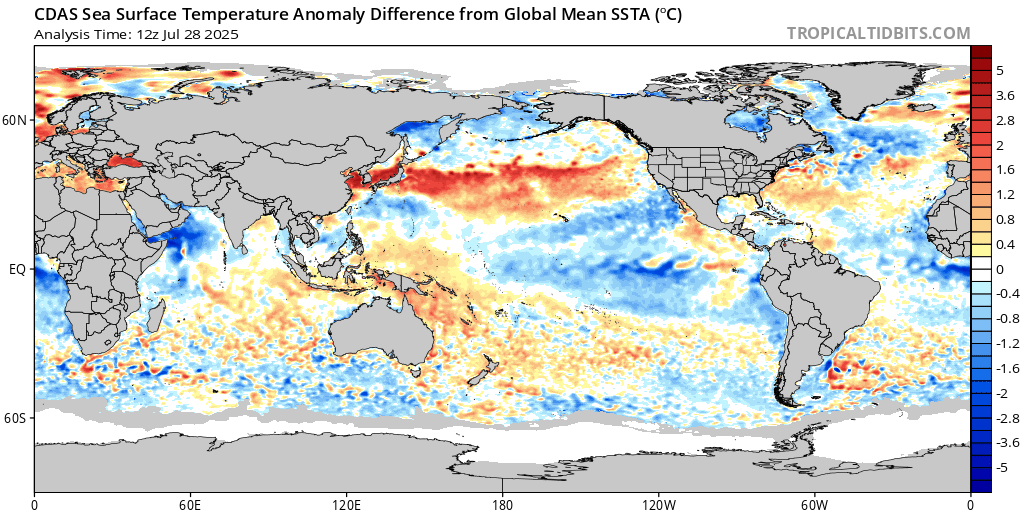 Compare it to Feb. 2015 below. Only now we have a cold return flow to the central tropical Pacific instead of a warm return flow in 2015. How does this affect UAH LT tropical anomalies going forward? 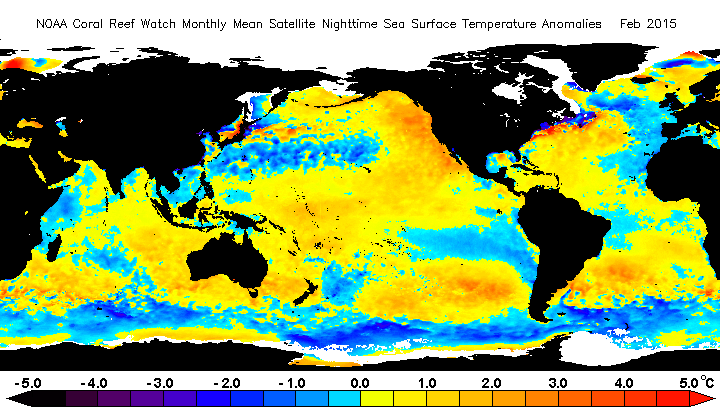 |
|
|
|
Post by nonentropic on Mar 17, 2023 23:39:27 GMT
|
|
|
|
Post by nonentropic on Mar 17, 2023 23:47:16 GMT
If you ask me the engine room of the worlds rainfall comes from the warm tropical waters.
The tropical waters are cooler than normal and differently distributed.
Will the change to SOI neutral or negative reverse this, otherwise the monsoon may be a little weaker than expected.
|
|
|
|
Post by missouriboy on Mar 18, 2023 15:40:59 GMT
If you ask me the engine room of the worlds rainfall comes from the warm tropical waters. The tropical waters are cooler than normal and differently distributed. Will the change to SOI neutral or negative reverse this, otherwise the monsoon may be a little weaker than expected. I think you're right non. I think we are watching the N. Pacific cooling and cycling back into the tropics. Maybe some upwelling as well? I don't think there is going to be an El Nino in the central tropical Pacific (+0.5C anomaly or higher) for a while. Watch that cold gyre. Should generate lots of dicussion.
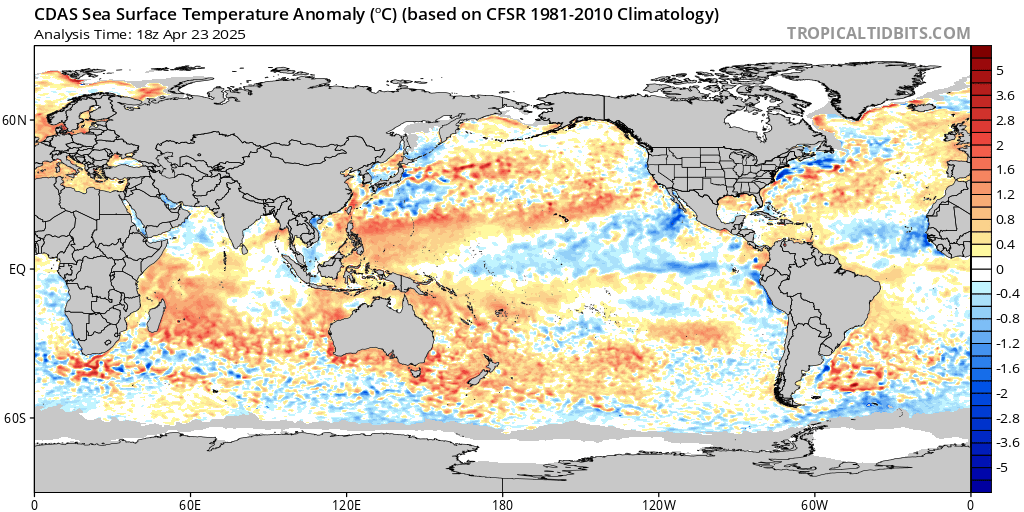 |
|
|
|
Post by duwayne on Mar 19, 2023 15:09:53 GMT
Willis Eschenbach throws some cold water on the idea of an 11-year cycle for ENSO.
|
|
|
|
Post by Sigurdur on Mar 19, 2023 16:15:32 GMT
Willis Eschenbach throws some cold water on the idea of an 11-year cycle for ENSO.
Does he? |
|
|
|
Post by duwayne on Mar 20, 2023 18:07:23 GMT
Willis Eschenbach throws some cold water on the idea of an 11-year cycle for ENSO.
Does he? I think so. But maybe I should have said he throws cold water on the idea of a correlation between the solar cycle and ENSO which extends back through many cycles. |
|
|
|
Post by code on Mar 20, 2023 23:44:41 GMT
If you ask me the engine room of the worlds rainfall comes from the warm tropical waters. The tropical waters are cooler than normal and differently distributed. Will the change to SOI neutral or negative reverse this, otherwise the monsoon may be a little weaker than expected. I think you're right non. I think we are watching the N. Pacific cooling and cycling back into the tropics. Maybe some upwelling as well? I don't think there is going to be an El Nino in the central tropical Pacific (+0.5C anomaly or higher) for a while. Watch that cold gyre. Should generate lots of dicussion.
 You sure about that?
|
|
|
|
Post by missouriboy on Mar 21, 2023 1:17:41 GMT
I think you're right non. I think we are watching the N. Pacific cooling and cycling back into the tropics. Maybe some upwelling as well? I don't think there is going to be an El Nino in the central tropical Pacific (+0.5C anomaly or higher) for a while. Watch that cold gyre. Should generate lots of dicussion.
You sure about that?
Little is for sure ... but Duwayne's previously posted chart shows that the last two cycles did not have an El Nino (+0.5C up) in this part of the cycle for at least another year. 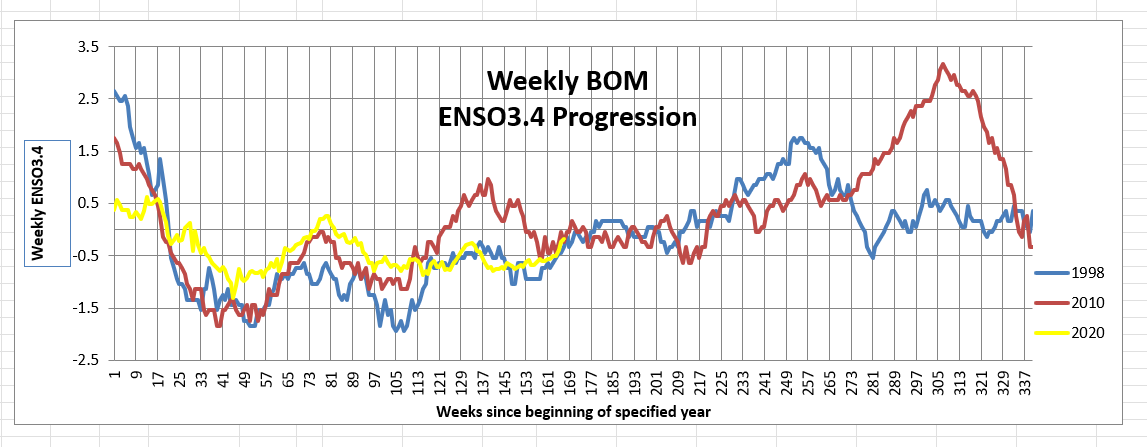 |
|
|
|
Post by Sigurdur on Mar 21, 2023 15:02:44 GMT
|
|
|
|
Post by missouriboy on Mar 21, 2023 18:42:57 GMT
All these forecasts give bureau-scientists something to do while drinking coffee and getting paid. Getting paid IS important.  They could have used a shotgun at various ranges and gotten similar results. No offense intended.  Kind of round off the corners of the scatter a bit. The Chart below shows the first 7 years of normalized monthly NINO 3.4 for each solar cycle 19 to 25. Note that SC25 is tracking low so far as cold NE Pacific water continues to cycle into the 3.4 area. Note that Region 3.4 is running colder beyond 24 Mths (-0.5 to -1C) in SC25 than it did in SC24. I call that "Cooling".
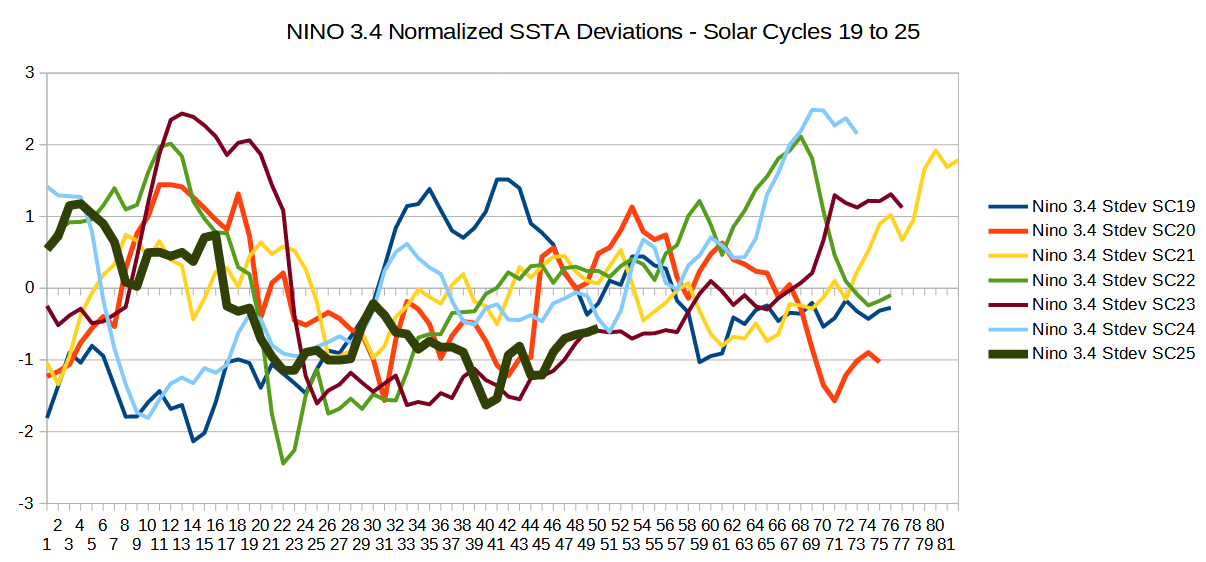 Note that the western-most Nino Region #4 was colder during the 1950s-60s. Drop back to those temps dead ahead?  |
|
|
|
Post by missouriboy on Mar 23, 2023 15:04:34 GMT
Good Graphic for anyone who has problems remembering the basic equatorial Pacific pressure pattern setups.  |
|
|
|
Post by missouriboy on Mar 23, 2023 21:05:34 GMT
CHART2-LEFT below shows ENSO3.4 & Geomagnetic-AP time series for months 1-61 for Solar Cvcles 23-25. SC25 is tracking SC24 ... just like sunspots an AP. CHART2-RIGHT below shows Solar-Polar Fields overlaid on sunspots for SC23-SC25.
CHART1-LEFT below In reference to the article that Justme posted on terminator events and a possible relationship to ENSO. Round Terminator events posited by authors are large brown dots. The left is August 1997 associated with SC23. Right dot is February 2011. Authors picked the points and each seems associated with a solar uptick. The 8/97 terminator is placed leading the ENSO takeoff to a large El Nino.. , but the SC24 terminator date is in a La Nina. I am wondering what forecast help that can be without additional info.
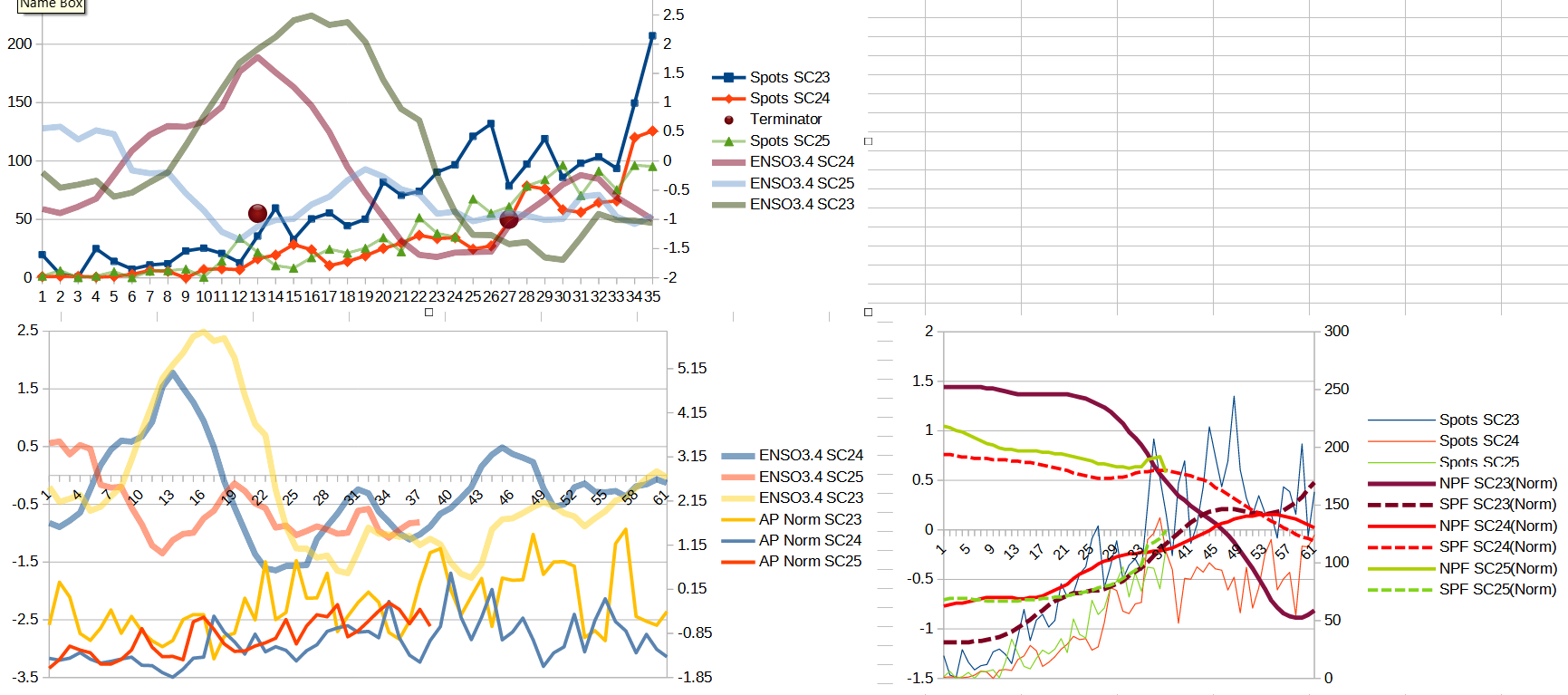 |
|
|
|
Post by missouriboy on Mar 29, 2023 3:49:32 GMT
I think so. But maybe I should have said he throws cold water on the idea of a correlation between the solar cycle and ENSO which extends back through many cycles. There are leads and lags that make his problem harder. |
|
|
|
Post by code on Mar 29, 2023 13:27:30 GMT
Acid,
It's 2023. Perhaps a rewording of this thread is in order or a new thread? Hint, hint
|
|